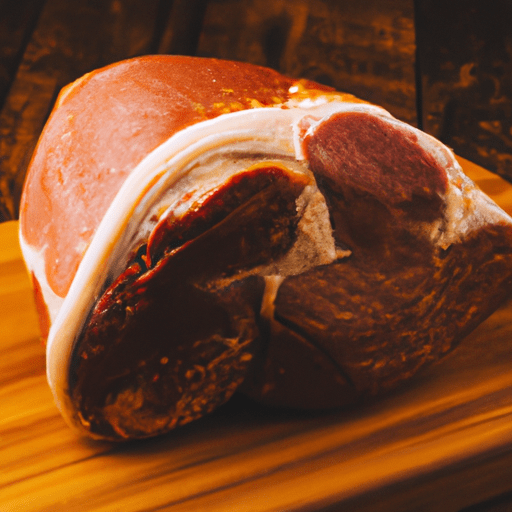The Delicious Art of Cooking Pork Shoulder Roast
If you’re a fan of juicy, melt-in-your-mouth meat, then look no further than the versatile and delicious pork shoulder roast. This cut of meat is renowned for its rich flavor, tender texture, and irresistible aroma that will make your taste buds dance with joy. Whether you’re planning a cozy family dinner or hosting a special occasion, pork shoulder roast is the perfect centerpiece that will leave everyone craving for more.
Taste and Texture that Delights
Pork shoulder roast, also known as pork butt or Boston butt, boasts a sublime combination of flavors. It features a well-marbled composition with layers of fat that enhance its succulence and contribute to its mouthwatering taste. When cooked low and slow, these fats render down, creating moist and tender meat that simply falls apart with the touch of a fork. This cut offers a fantastic balance between lean and fatty meat, resulting in incredibly flavorful bites.
Culinary Versatility
Pork shoulder roast’s versatility in the kitchen is exceptional. Whether you’re roasting, braising, smoking, or grilling, this cut can adapt to a variety of cooking methods, delivering fantastic results every time. Roasting for a prolonged period allows the meat to become exceptionally tender and develop a beautifully caramelized crust. Braising pork shoulder roast in aromatic liquids creates a luscious and flavorful dish that will impress even the most discerning palates. Additionally, smoking this cut imparts a smoky depth that elevates its already remarkable taste.
Nutritional Benefits
While savoring the delightful flavors of pork shoulder roast, it’s interesting to note the nutritional benefits it offers. This cut is an excellent source of high-quality protein, which is essential for muscle growth and repair. Additionally, it’s packed with essential vitamins and minerals such as zinc, vitamin B12, thiamin, and selenium, which contribute to overall health and vitality. Although it contains some fat, the fat content helps bring out the flavors and adds richness to your meal. Just remember to enjoy pork shoulder roast in moderation as part of a balanced diet.
A Historical Slice
Delving into the history of pork shoulder roast reveals its deep-rooted presence in culinary traditions. Interestingly, “Boston butt” is a misnomer, as the cut doesn’t come from the rear end of the pig but rather from the upper shoulder. The term “butt” refers to the wooden barrels, known as “butts,” in which this cut was once shipped and stored during the colonial era. Today, pork shoulder roast continues to be a much-loved staple in American cuisine, particularly during backyard barbecues, family gatherings, and festive celebrations.
Tips and Tricks for Cooking Success
Cooking pork shoulder roast to perfection requires a little time and patience, but the results are undoubtedly worth it. Here are a few tips and tricks to help you achieve culinary success:
- Low and slow: To achieve a tender and moist roast, cook it slowly over low heat. This allows the complex flavors to develop and ensures the meat remains tender and succulent.
- Marinades and rubs: Enhance the flavors of your pork shoulder roast by marinating or using dry rubs. These can feature a range of herbs, spices, and aromatic ingredients that infuse the meat with additional layers of taste.
- Rest and carve: Once your pork shoulder roast is cooked to perfection, allow it to rest for a few minutes before carving. This enables the juices to redistribute, resulting in a more flavorful and juicy final result.
- Versatile leftovers: Don’t forget about the delicious possibilities of any leftovers! Use the remaining pork to create delectable sandwiches, tacos, quesadillas, or even add it to hearty stews for an extra punch of flavor.
Pork shoulder roast is a true culinary delight, offering a symphony of flavors, textures, and endless culinary possibilities. So, grab your apron, fire up your oven or grill, and embark on a mouthwatering adventure that will impress and satisfy even the most discerning appetites.
Pork Shoulder Roast
Origin: The pork shoulder roast, also known as pork butt or Boston butt, comes from the upper part of the pig’s shoulder area. Despite the name, pork butt does not actually come from the rear of the pig but rather from the shoulder.
Common Uses: Pork shoulder roast is known for its rich flavor and tenderness, making it a popular cut for slow cooking methods like braising, roasting, or smoking. It is often used to make pulled pork, a popular dish in various cuisines.
Nutritional Benefits: Pork shoulder roast is a good source of protein and essential nutrients. It contains essential vitamins and minerals including iron, zinc, selenium, and B-vitamins. However, it is also higher in fat compared to leaner cuts of pork, so moderation is advised.
Unique Properties: Pork shoulder roast has a higher fat content compared to some other cuts of pork. This contributes to its tenderness and flavor when cooked low and slow. The marbling of fat throughout the meat helps keep it moist and succulent. It is also versatile, lending itself well to various seasoning blends and cooking techniques.
Historical Significance: Pork shoulder roast has long been a staple in traditional cuisine. In the past, pork was a relatively inexpensive meat option for many households, making it an accessible choice for celebrations and large gatherings. Slow-cooked pork shoulder has a history dating back centuries and is a component of many traditional dishes from around the world.




Use the share button below if you liked it.
It makes me smile, when I see it.